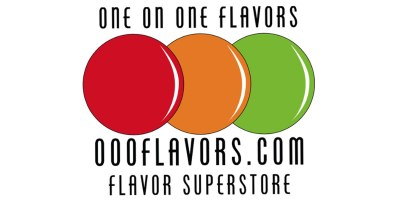In recent years, the food and beverage industry has seen a notable shift towards innovation and convenience, and one of the biggest trends fueling this transformation is the rise of powder flavor. Once seen as just a tool for baking mixes and drink sachets, powder flavors have evolved into a powerhouse ingredient reshaping how companies create, package, and market their products. From local businesses to global food giants, more and more brands are embracing powder flavors — and for good reason.
What is Powder Flavor?
Powder flavor refers to concentrated flavoring agents in a dry, powdered form. Unlike liquid flavorings or extracts, powder flavors are shelf-stable, lightweight, and easy to incorporate into a wide variety of products. They can be made through processes like spray drying or freeze-drying, which preserve the natural taste of fruits, herbs, spices, and other flavor sources while eliminating water content.
You'll now find powder flavors not only in classic applications like instant coffee or powdered drink mixes but also in trendy and health-focused products like protein shakes, meal replacement powders, seasoning blends, and even gourmet desserts.
Why is Powder Flavor Gaining Popularity?
- Extended Shelf Life
- One of the biggest benefits of powder flavor is its impressive shelf life. Liquid flavors are prone to spoilage and degradation over time, but powders can maintain their taste and potency for much longer. This makes them ideal for businesses aiming to reduce waste, manage inventory efficiently, and reach a wider market without worrying about perishability.
- Versatility Across Categories
- Powder flavor isn’t just for beverages. Today, it's used in everything from baking mixes, sauces, and rubs to frozen desserts and snack foods. Its versatility allows chefs, food scientists, and small-batch producers to experiment creatively without worrying about liquid separation, moisture control, or limited application.
- Cost-Effective and Easy to Transport
- Since powders are lightweight and don’t require refrigeration, transportation and storage costs are lower. For small and medium-sized food businesses — especially local producers — this can make a huge difference. Lower logistical costs mean more room for competitive pricing or higher profit margins.
- Health and Wellness Appeal
- As consumers grow more health-conscious, they are paying closer attention to ingredient lists. Powder flavors, especially natural or organic ones, can deliver intense flavor without the need for added sugars, artificial colors, or preservatives. This makes them attractive to companies developing products in the wellness, fitness, and clean-label markets.
Local Businesses Are Getting Creative
Across the U.S., local food businesses are adopting powder flavors to differentiate their products. Craft coffee roasters are creating custom-flavored lattes and mochas with natural powder blends. Bakeries are enhancing their pastries and desserts with fruit powders and spice blends, while boutique spice companies are developing seasoning kits for home cooks. Even breweries and distilleries are experimenting with powder flavors for unique cocktails, hard seltzers, and specialty brews.
Small businesses, in particular, are benefiting from powder flavor’s scalability. Whether you’re producing in small batches for farmers' markets or scaling up for distribution to grocery stores, powder flavor gives you the flexibility to adjust production without sacrificing quality.
The Future of Powder Flavor
With the demand for convenient, high-quality, and health-conscious food products on the rise, powder flavor is positioned to continue growing. Advances in food technology are leading to even more natural, sustainable, and customizable powder flavor options, opening doors for innovation across the industry.
For local food entrepreneurs, this trend offers an opportunity to meet consumer expectations, stay competitive, and create standout products. Powder flavor isn't just a trend — it's a game-changer.





Comments